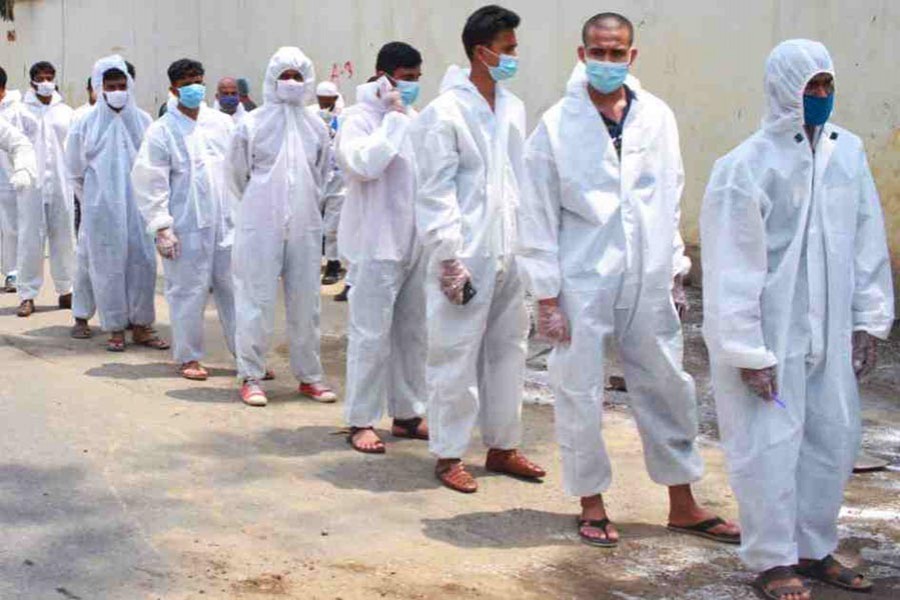Of late, the rate of recovery from Covid-19 and the rate of positivity (percentage of tests found to be positive a day) have marked a positive trend. For example, as late as Tuesday, a total of close to 228,000 patients recovered from the disease. The total confirmed cases till that day were 330,000. That gives the rate of recovery rate at around 69 per cent. Also, the rate of Covid-19 infection in the community has been declining. The rate in 24 hours until Tuesday, as reported by the Directorate General of Health Services (DGHS), was at 12.64 per cent. Interestingly, compared to the last five months' statistics, it was the lowest such rate recorded so far by the DGHS. Looking at the behaviour of the infection rate over all these months, this latest count holds some hope, though the figure is not low when considered regionally.
Curiously, in sync with the falling infection rate, the occupancy rate of beds at the pandemic-dedicated hospitals has also been exhibiting a steady decline. The DGHS records, again, show that compared to the total Covid-19 hospital beds in the country, less than a quarter of them was occupied by patients on Tuesday. In other words, over three quarters of the beds in the country's Covid-19-speciic hospitals are without patients. Seeing this continued fall in patient numbers, the hospital authorities have, reportedly, gone for reducing the number of dedicated beds in hospitals. But before going overboard about the infection rate or bed occupancy figures, one would do well to be a bit extra-cautious. That is because experiences from different countries show that the behaviour of the Covid-19 virus is the most baffling one that virologists the world over have ever come across. It can change its mode of attack anytime, anywhere.
Therefore, there is a need to be on guard and judicious before withdrawing any hospital facility on the basis of a certain trend displayed briefly by the virus. As for the infection rate, the latest figure of 12.64 per cent, is still high. The WHO, for instance, requires that a 'below five per cent' positivity rate has to be attained two weeks before taking any decision on lifting pandemic-related restrictions from a place. Even so, all restrictions on the public's movement were lifted on September 01 last.
In another development, a recent research by the Bangladesh Council of Scientific and Industrial Research (BCSIR) found that the strain of Covid-19 active in Bangladesh mutates at a rate of 12.6 per cent. This is close to twice that of the global average rate of the virus's mutation at 7.23 per cent. Scientists behind the study are inclined to believe that the mutation figure may have something to do with the seemingly 'less deadly' nature of the Covid-19 strain active in this part of the world. But again, such an observation by scientists should not prompt us to jump to a conclusion that risks from the virus are low in Bangladesh. So, though encouraging, there is still no room for us to be complacent about the indicators showing either the recovery or the positivity or the mutability rate of the virus. As such, any hasty decision based on an evolving trend of the disease should be avoided at all costs


